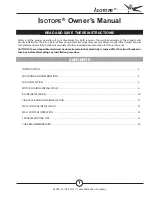
4.7 Connecting the duct
When connecting the ducting, the customer must ensure that the connection points are installed as air-tight as pos-
sible in order to avoid negative influences from leakages such as air volume deviations, power consumption, etc.
Unless otherwise specified, the connecting material is not included in the supply package. In the case of one-sided
connection of the ductwork, intervention in the damper blade is to be prevented by suitable measures (for example
grilles).
Before connecting the ducting:
Check the inside of the unit for damage and loose parts.
Remove any contamination from the ducting.
Circular ducting – metal
Spigot without lip seal
Plug-in mounting on ducting in accordance with EN 1506 or EN 13180.
Affixing and sealing with ventilation strip, e. g. KLP180.
When using heat-shrinkable tape, carefully heat up the plastic parts near the
spigot.
Spigot with optional lip seal
Plug-in mounting on ducting in accordance with EN 1506 or EN 13180.
Connect the spigot with the ducting, e. g. using drilling screws.
No further sealing required.
Spigot with optional steel flanges (galvanised steel)
Matching flanges available as accessories
Seal and screw connection M8 (to be provided by others)
Dimensions and number of holes in accordance with EN 12220.
Position the ducting exactly. Do not pull the distances together via the flange
connection.
Circular duct – plastic
Plastic flanges (TVRK and TVLK)
Matching flanges incl. seal available as accessories
Screw connection M8 (to be provided by others)
Dimensions and number of holes in accordance with EN 12220.
Position the ducting exactly. Do not pull the distances together via the flange
connection.
Plastic spigot (TVRK and TVLK)
Installation on ducting in accordance with DIN 8077
–
with clamp connectors
–
by plastic welding
Installation
Connecting the duct
VAV terminal units VARYCONTROL
22















































